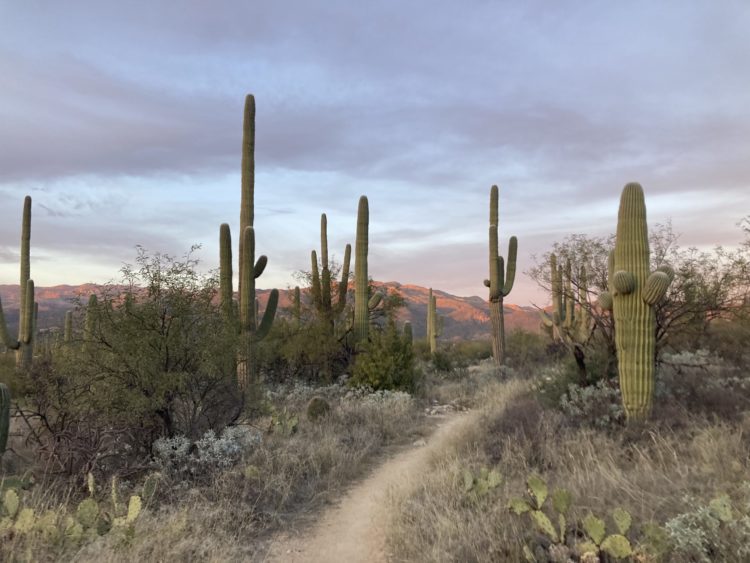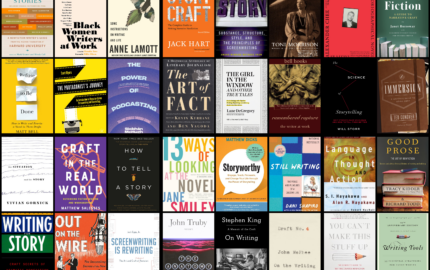EDITOR’S NOTE: Six mid-career freelance journalists who specialize in science and environmental stories offered takeaways from a weeklong workshop on nonfiction writing held at a guest ranch in Tucson, Arizona.
One thing we journalists tend to forget: There’s safety in numbers.
With time, we get good enough to get the job done, but maybe not as great as we dreamed we would be one day. We feel mostly alone in this journey. We have colleagues, bosses, rivals, friends and that jerk who always gets the story just ahead of us. But the road to the Big Story, the Great Story, feels like one we walk alone.
What I learned from a weeklong narrative nonfiction workshop is that we’re all on that path together. We stumble in the same ways, dawdle in the same ways, get lost and rediscover ourselves in ways that, while not identical, are so similar as to point to something beyond a personal failure.
That’s true of the bowel-tightening, headache-inducing, existential terrors of the job as well as the pettiest bad habits and oversights. One journalist at the workshop said she’d lost the joy. Gulp. Another had beautiful ideas but stalled on execution. Guilty. Slathering every sentence with tedious introductory dependent clauses? Me. Getting lost in the fog between reporting and focusing a story? Uh-huh.
But this week those admissions came with a surge of liberation.
It was a happy jolt to realize that your bad habits and flaws and soft spots, your frustrations and stumbling blocks, are not your unique failings; they’re occupational hazards. These are professional failings, just like a runner gets an Achilles glitch after years of training, or a baseball player gets the yips. It comes with the territory. They are things we all wrestle with as professionals, the result of trying to solve the same problems in similar ways.
But if the same challenges afflict many of us, the same solutions can help us make it to that Big Story. Below are just a few of the things my fellow word-travelers are taking away from the week.
~ Kat McGowan, Berkeley California
As a science journalist, I’m used to tackling a story — new or familiar — with an open mind, curiosity and a word count. My job is to get the details right every time. Whether it’s DNA heritability, the chemistry of polluted water or the speed of a new variant, if it’s off by 10x or 100x, it’s wrong.
These are the fundamental tools of science writing. But when do I analyze my words as closely as my sources’ findings?I didn’t. Until I was shown a way to examine my writing in a logical, stepwise process: All it takes is a print-out of my copy, a highlighter and a methodical approach to seeing my writing habits, one part of speech at a time. It’s quite scientific, really.
I can highlight how many adjectives I’ve used, and then I can see whether they are all bunched in the lead or (hopefully) spread throughout the story. Do I use “that” way too often, like a demented twitch? Do I rely on too many questions in an attempt to keep the reader engaged? These are all crutches if overused or misused. Once pulled apart, they are revealed as such.
Writing can be an art, but first, like any art, it’s a craft. You have to know how the pieces fit together. And you can’t know that until you dissect it.
~ Starre Julia Vartan, Bainbridge Island, Washington
Imagine your dream backpacking trip, maybe the Camino de Santiago or the Pacific Crest Trail. You think about the friend you’ll hike with, where you’ll camp each night, what you’ll eat, the spectacular landscapes and sunsets, what you’ll eat. Everything is going to be perfect and you can’t wait to start.
That’s the “maximum” approach to planning, whether it’s a backpacking trip or a reporting project. For a reporting project, imagine everything that would make your published story match your ambitions. Every source says yes, gives you all the time you want: “Don’t hesitate to call me if you need anything else” You have funding for travel anywhere you need to go to capture perfect scenes and description. You have time to shape a compelling story structure, then massage it to a perfect flow. Lean into your enthusiasm and make a list of everything you need and want for that ideal story.
Now take a deep breath and plan for potential obstacles. Are there rivers you might need to ford? What about sources who might not return your calls? What if China closes airports to international travel and you can’t get to Shanghai?
Don’t abandon your enthusiasm now. But be realistic. If everything doesn’t break your way, what’s the most you can do with what you know you can get? Is it enough? This is the place to think hard about whether you can make your plan work.
~ Jennie Dusheck, Santa Cruz, California
Sensory details make the characters in your story real.
Characters can be people, places, or things. The details used to describe your characters should not only activate the senses (sight, smell, sound, taste, touch and even emotion), but also be relevant and meaningful in the context of your story. For example, telling the reader that your character is a “35-year-old woman with childbearing hips but no child” makes sense in a story about a woman freezing her eggs but not if the story is about a woman scientist studying dog cognition.
In short: make sure the ornaments on your Christmas tree each have a special meaning and never overload it with tinsel!
~ Korinna Duffy, Edgewater, Colorado
I often find myself stuck at the same point when I’m working on stories: trying to find the focus.I started with a good idea and reported the hell out of it. I’ve got good stuff in my notebook. But when I sit down to write, my notes are a jumble of ideas and issues competing for my attention, and I struggle to identify the key point of my story. I always manage to somehow muddle my way through to some clarity, but it’s a slow, frustrating process that doesn’t feel like a process at all.
Sound familiar? Here’s a strategy to help find that key point: Ask yourself where you are trying to take the reader. If someone gets to the end of your piece and walks away with just one thing in their mind, what should that one thing be? Or, to mix a metaphor, which strand of spaghetti do you want to stick to the wall?
Shifting from thinking about what you want to say to what you hope the reader will hear should help that key point rise out of the morass.
~ Betsy Mason, San Francisco Bay area, California
Put metaphor and simile to work in making the exotic familiar and the familiar exotic.
Metaphor and simile can be one slip of the pen away from cliché. Like most writing techniques, they should be used sparingly and to powerful effect. One of the most impactful uses of these literary tools is to help readers see something in a new way.
On one hand, metaphor and simile can help the audience understand something they might never have thought they could relate to. This can be used to connect someone to a deep emotional or cultural experience that previously seemed completely foreign or simply to give a handhold onto a technical term: “A centrifuge works like the spin cycle on a washing machine.”
Metaphor and simile can alternatively shine a different light on a familiar topic or concept, illuminating hidden facets that lead to an “aha” moment when a reader discovers how to articulate an experience they knew but never could quite describe.
Consider this metaphor after a weeklong writing workshop: Writers are all trying to navigate a lonely, obstacle-filled road. No one can make the trip for us, but maybe we can share some maps.
~ Chloe Page, Pittsburgh, Pennsylvania
***
A version of this post was first published as a Storyboard newsletter on Friday, Jan. 13, 2023



